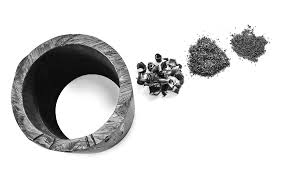Sep . 28, 2024 13:50 Back to list
pvc to hdpe pipe connection product
Connecting PVC to HDPE Pipes A Comprehensive Guide
The connection between PVC (Polyvinyl Chloride) and HDPE (High-Density Polyethylene) pipes is an essential consideration in plumbing and construction projects. These two materials are popular choices in various applications due to their durability, resistance to corrosion, and cost-effectiveness. However, connecting them requires careful planning and the right tools to ensure a reliable and leak-free joint.
Understanding the Materials
PVC pipes are widely used in drainage, waste, and vent systems due to their strength and chemical resistance. They are also lightweight, making installation more manageable. On the other hand, HDPE pipes are renowned for their flexibility, making them an ideal solution for applications involving underground installations or situations where ground movement occurs. HDPE’s resistance to a wide range of chemicals also makes it suitable for water infrastructure projects.
Connection Methods
When it comes to connecting PVC to HDPE pipes, several methods can be employed. The chosen method will depend on the specific application, available materials, and installation conditions.
1. Mechanical Couplings One of the most common methods is to use mechanical couplings or adapters. These fittings are designed to accommodate the different diameters and material properties of both pipe types. Mechanically joining the pipes can ensure a strong bond that can withstand pressure and movement.
2. Fusion Welding For some projects, fusion welding techniques can be utilized, particularly with HDPE. This method involves heating the surfaces of both pipes and then joining them together to form a strong, homogeneous bond. However, this typically requires special equipment and skilled labor.
3. Glue and Sealants In certain instances, specialty glues and sealants designed for dissimilar materials can be suitable. When using adhesives, it is crucial to follow the manufacturer's instructions regarding surface preparation and curing times to avoid future leaks.
pvc to hdpe pipe connection product

4. Flanged Connections Flanges can also connect PVC and HDPE pipes. This technique involves attaching flanges to the ends of the pipes, which can then be bolted together. Flanged connections are particularly beneficial in applications where regular disassembly is necessary for maintenance.
Installation Tips
When connecting PVC to HDPE pipes, some installation tips can enhance the effectiveness of the connection
- Clean the Surfaces Ensure that the ends of both pipes are clean and free of debris or contaminants. This preparation is critical for achieving a secure and durable connection.
- Check for Compatibility Verify that all fittings and adhesives used are compatible with both PVC and HDPE. Mismatched materials can lead to failure, leaks, or poor performance.
- Follow Manufacturer Guidelines Always adhere to the guidelines provided by manufacturers regarding installation practices, as these recommendations will ensure optimal performance and longevity of the joint.
Conclusion
Connecting PVC to HDPE pipes can be a straightforward process when utilizing the right methods and techniques. Understanding the properties of both materials and employing proper installation practices is essential for creating robust and leak-proof joints. With careful attention to detail, professionals can successfully integrate these two widely used materials into an effective plumbing or construction system that meets safety and durability standards.
-
High-Quality PVC Borehole Pipes Durable & Versatile Pipe Solutions
NewsJul.08,2025
-
High-Quality PVC Perforated Pipes for Efficient Drainage Leading Manufacturers & Factories
NewsJul.08,2025
-
High-Quality PVC Borehole Pipes Durable Pipe Solutions by Leading Manufacturer
NewsJul.08,2025
-
High-Quality PVC Borehole Pipes Reliable PVC Pipe Manufacturer Solutions
NewsJul.07,2025
-
High-Quality UPVC Drain Pipes Durable HDPE & Drain Pipe Solutions
NewsJul.07,2025
-
High-Quality Conduit Pipes & HDPE Conduit Fittings Manufacturer Reliable Factory Supply
NewsJul.06,2025

